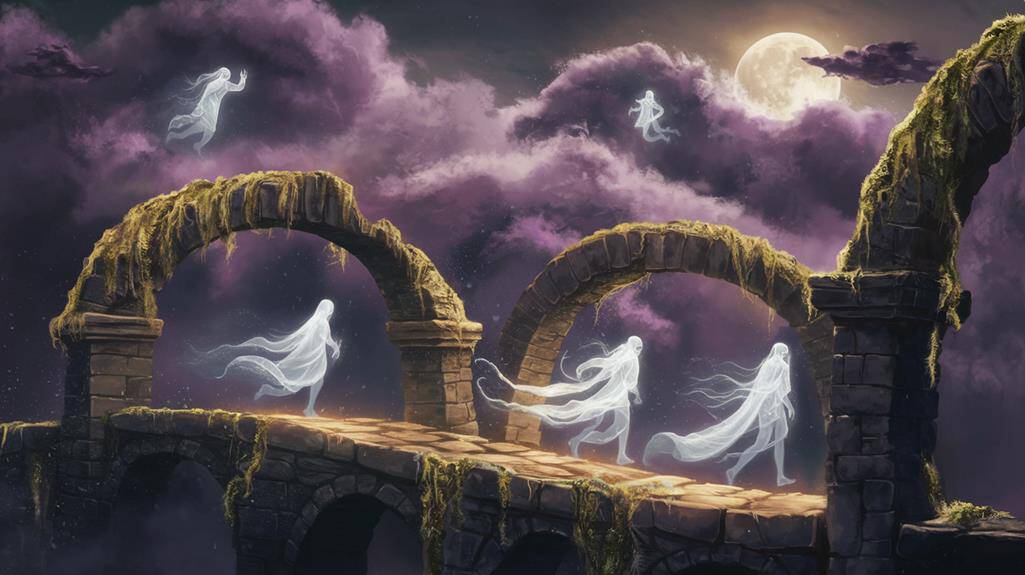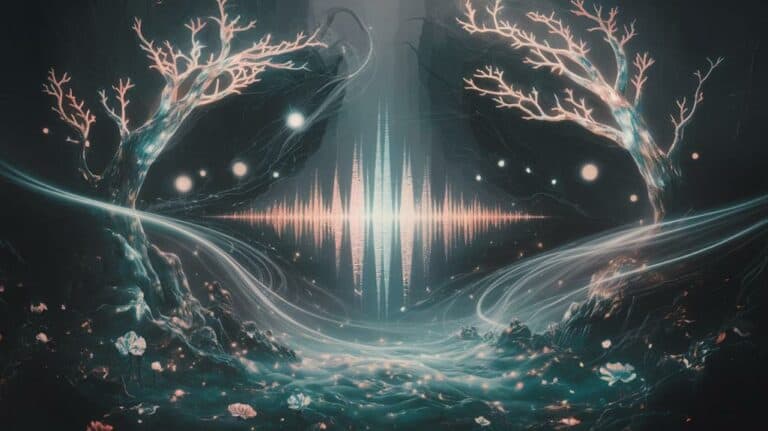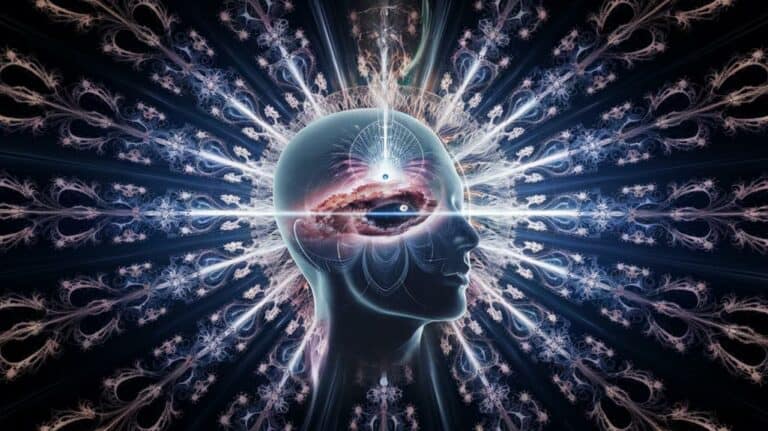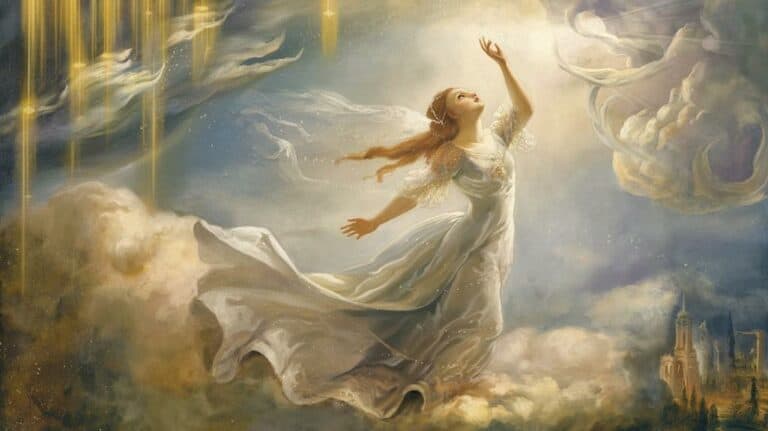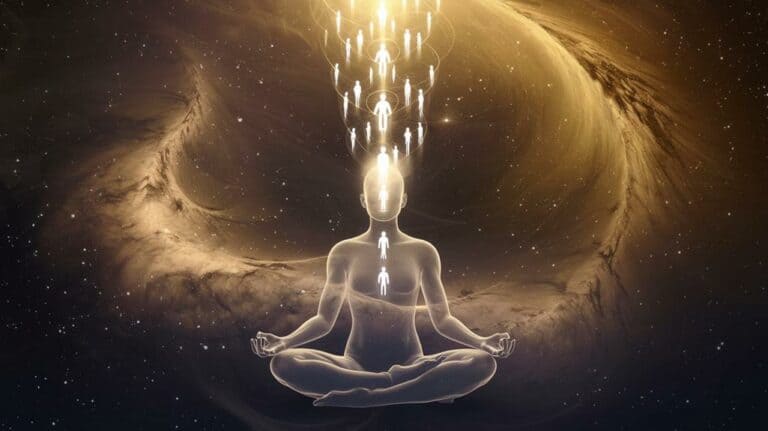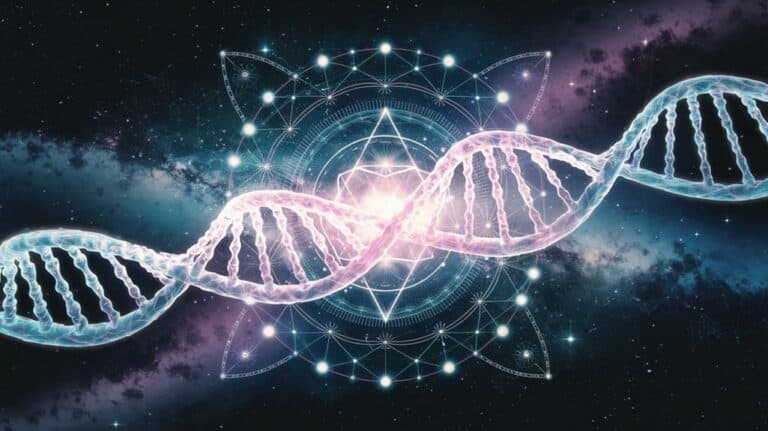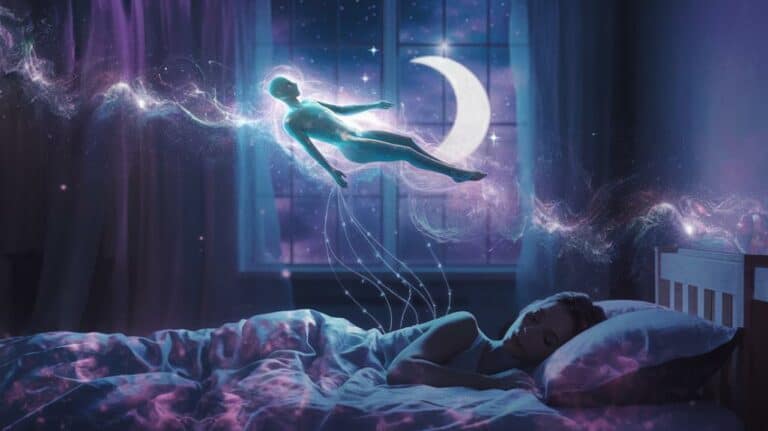Mystical Interpretations of Death and the Afterlife
You’ve likely pondered what lies beyond the threshold of mortality – it’s a universal contemplation that’s shaped civilizations and belief systems throughout human history. While modern science offers clinical explanations of death, mystical interpretations present a more nuanced view, suggesting that consciousness doesn’t simply cease but transforms. From the elaborate funeral rites of ancient Egypt to the karmic cycles of Buddhist thought, these perspectives paint death not as an end, but as a doorway. As you consider these time-honored traditions and their insights into the great mystery, you’ll discover how different cultures have mapped the territory between the known and the infinite.
Ancient Egyptian Death Rituals
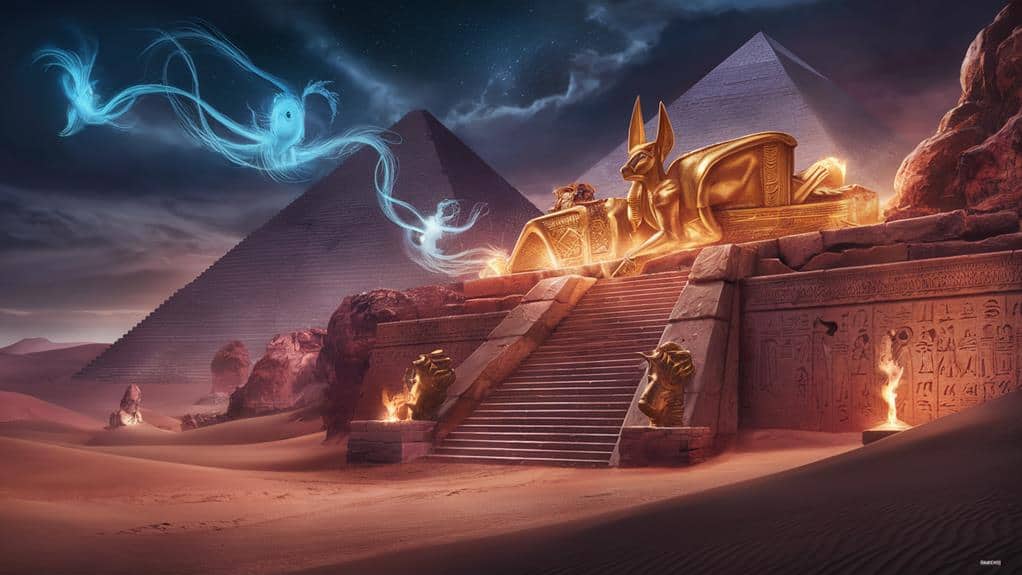
A golden death mask stares eternally from its resting place, guarding secrets of Ancient Egyptian burial practices that spanned thousands of years.
You’ll find yourself transported to a domain where death wasn’t an ending but a magnificent transformation, as priests meticulously prepared bodies through a 70-day journey of mummification. They’d remove organs, preserve the body with natron salt, and wrap the deceased in layers of linen, each step accompanied by sacred incantations.
You’re witnessing a civilization that didn’t just prepare bodies – they prepared souls. The Book of the Dead wasn’t merely a text; it was your passport to the afterlife, filled with spells you’d need to navigate the treacherous underworld.
In your tomb, you’d find everything deemed essential for eternal life: food, furniture, jewelry, and even small boats to sail the celestial waters. The walls would tell your story in vibrant hieroglyphs, ensuring your name and deeds wouldn’t be forgotten.
Your heart would be weighed against the feather of Ma’at, determining if you’d earned your place among the eternal stars, where you’d join Osiris in endless cycles of death and rebirth.
Buddhist Perspectives on Passing
The Buddhist path illuminates death not as a finale but as a turning point in an endless cycle of rebirth. You’ll find that within this ancient wisdom tradition, your consciousness doesn’t end with your last breath but continues its journey through various domains of existence.
As you deepen your understanding, you’ll discover that it’s your karma – the sum of your actions and intentions – that determines the nature of your next incarnation.
In Buddhist thought, you’re encouraged to view your current life as precious, yet temporary. You’ll learn that attachment to physical existence creates suffering, while acceptance of impermanence leads to liberation.
Through meditation and mindful living, you can prepare for the change of death just as you’d prepare for any significant journey. The Tibetan Book of the Dead serves as your guide, describing the states of consciousness you’ll encounter between death and rebirth – the bardo states where you’ll face both brilliant clarity and challenging illusions.
Spirit Realms Across Cultures
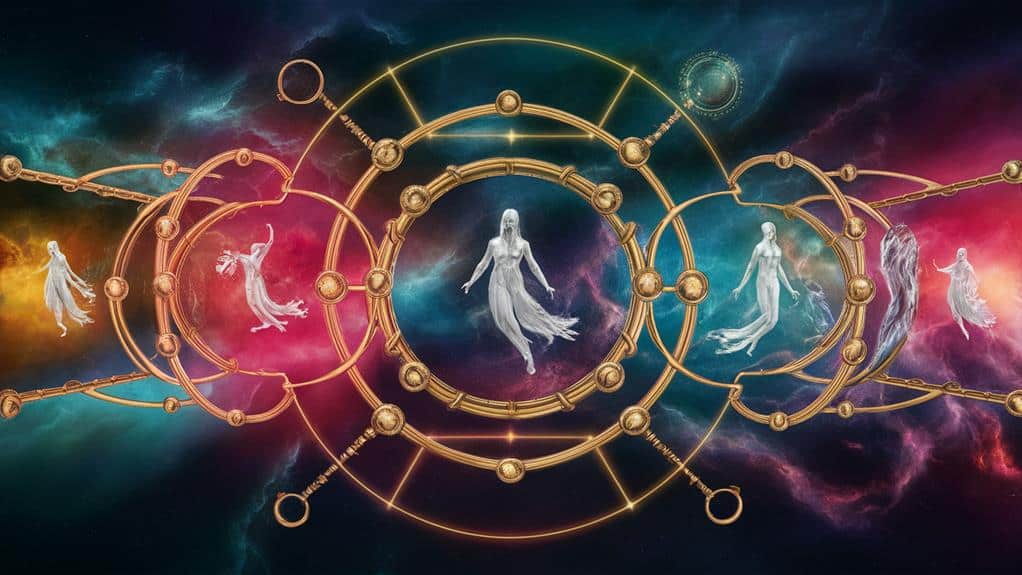
Venturing across world mythologies reveals striking parallels in how different cultures envision the domains of the dead.
You’ll find that ancient Egyptians pictured Duat as a complex underworld where souls navigate treacherous passages before reaching Osiris’s judgment hall. Meanwhile, Norse traditions speak of multiple territories: from the warrior’s paradise of Valhalla to the misty depths of Helheim. In Aztec cosmology, you’d encounter nine distinct levels of the underworld, each presenting unique challenges for the departed soul. These aren’t mere fantasies – they’re profound metaphors for humanity’s eternal quest to understand what lies beyond.
What’s particularly fascinating is how you’ll discover common threads weaving through these seemingly disparate belief systems. Whether it’s the Greek Elysian Fields or the Celtic Otherworld, you’re seeing recurring themes of judgment, purification, and transformation.
The Chinese concept of Diyu mirrors Dante’s layers of Hell, suggesting that across continents and epochs, we’ve shared similar intuitions about the soul’s journey. These parallel visions remind you that death isn’t just an ending – it’s a threshold to territories where the boundaries of existence stretch beyond our earthly understanding.
Medieval European Death Mysticism
Medieval Europe plunged deeply into death-centered spirituality, where mystics and theologians developed intricate philosophies about mortality and the soul’s passage.
You’ll find that death wasn’t merely an endpoint but a transformative threshold, where the physical and spiritual domains intersected in profound ways. Through illuminated manuscripts and cathedral art, you’re invited to witness how medieval mystics portrayed death as both terrifying and transcendent.
In your exploration of this era, you’ll discover the Dance of Death tradition, where you’d see death depicted as an equalizing force that claims both peasants and kings.
The period’s mystics didn’t shy away from contemplating bodily decay; instead, they saw it as a pathway to spiritual enlightenment. You’re encountering a worldview where death masks, memento mori, and elaborate burial rituals weren’t meant to frighten but to awaken your consciousness to life’s deeper meanings.
Within these medieval death traditions, you’ll recognize how mystics understood mortality as a mirror reflecting eternal truths.
Their insights continue to resonate, reminding you that facing death’s reality can paradoxically enrich your experience of life.
Indigenous Ways of Transition
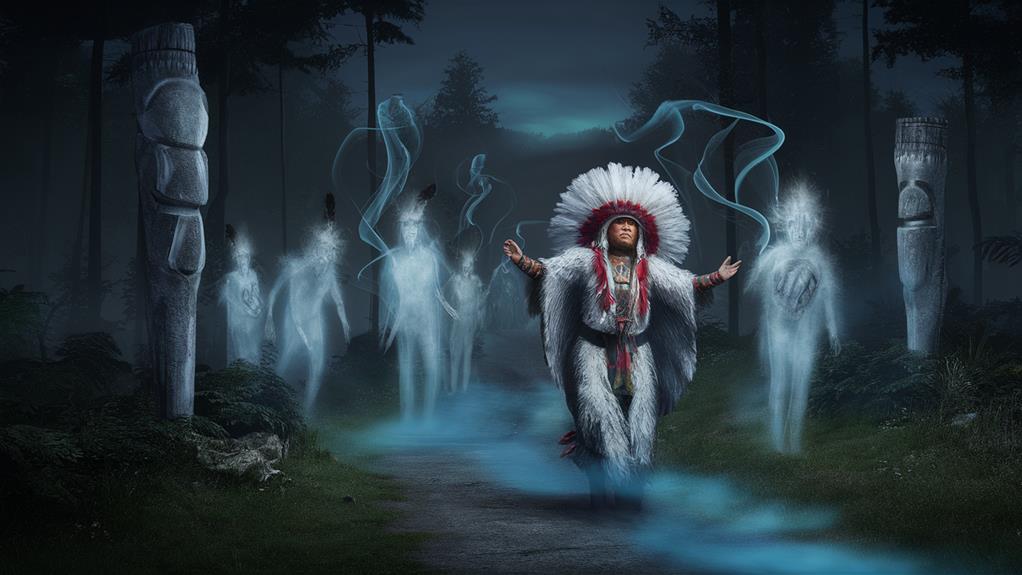
Moving from Europe’s medieval mysticism to global indigenous perspectives reveals starkly different yet equally profound approaches to death and spiritual passage.
You’ll find that indigenous peoples across continents share a striking commonality: they don’t view death as an endpoint but as a transformation within life’s continuous circle. When you explore their sacred traditions, you’ll discover that the boundaries between the physical and spiritual domains aren’t rigid walls but permeable veils through which consciousness flows freely.
In these ancient ways, you’re never truly separated from those who’ve crossed over. The ancestors walk beside you, their wisdom threading through your daily existence like wind through trees.
You’ll notice how indigenous death rites often celebrate the deceased’s journey rather than mourning their departure, marking change through sacred ceremonies that can span days or seasons. Through drumming, dancing, and ritual offerings, you’re helping to guide the spirit home while maintaining your connection to it.
This perspective teaches you that death isn’t a fearsome void but a doorway through which consciousness continues its eternal dance, reminding you that you’re part of an unbroken circle of being that transcends physical existence.
Modern Metaphysical Death Beliefs
Contemporary metaphysical beliefs about death often blend ancient wisdom with modern spiritual concepts, creating a rich tapestry of interpretations about what lies beyond.
You’ll find that today’s seekers draw from quantum physics, energy theories, and consciousness studies to explore what happens when you shift from physical form. These modern interpretations often embrace the notion that you’re more than your body – you’re an eternal consciousness having a temporary human experience.
You’ll discover that many current metaphysical thinkers view death as a dimensional shift rather than an ending. They’ll tell you that consciousness doesn’t cease but transforms, much like energy changing states.
You might encounter beliefs about multiple planes of existence, where your awareness continues to evolve after physical death. Modern metaphysical traditions often emphasize personal experience over dogma, encouraging you to trust your intuitive understanding of life’s greatest mystery.
What’s particularly striking about contemporary views is how they’re increasingly supported by near-death experiences, consciousness research, and quantum theories – bridging the gap between spiritual wisdom and scientific inquiry.
You’re invited to explore these perspectives while forming your own understanding of life’s final shift.



